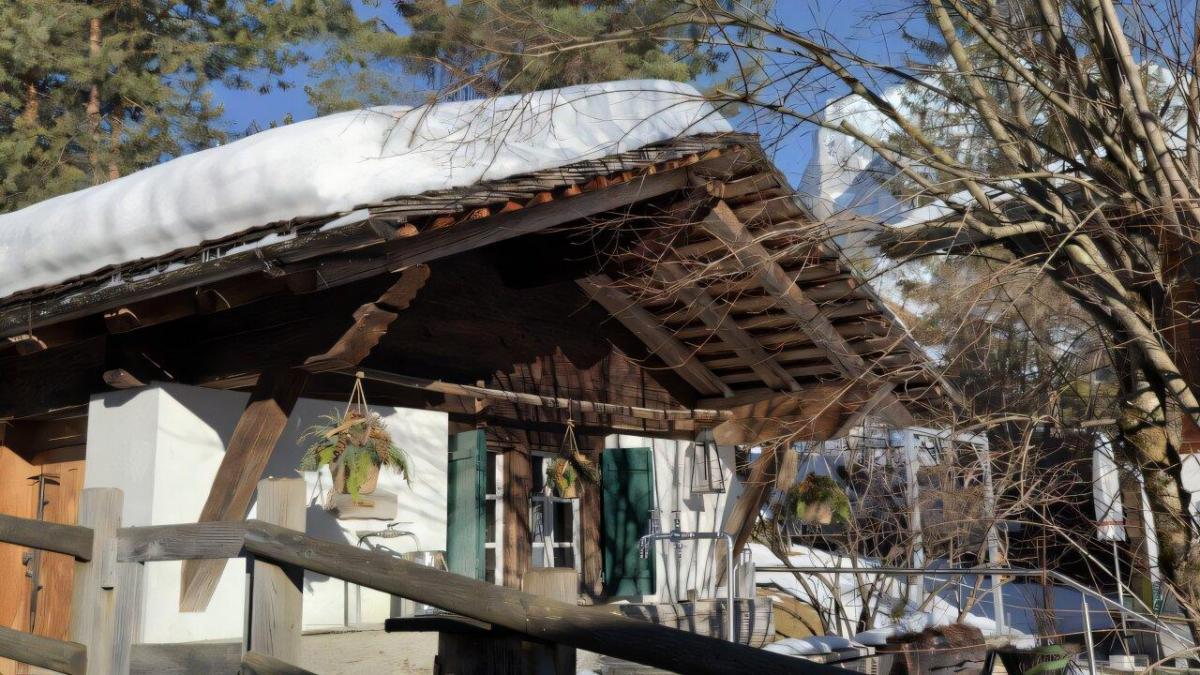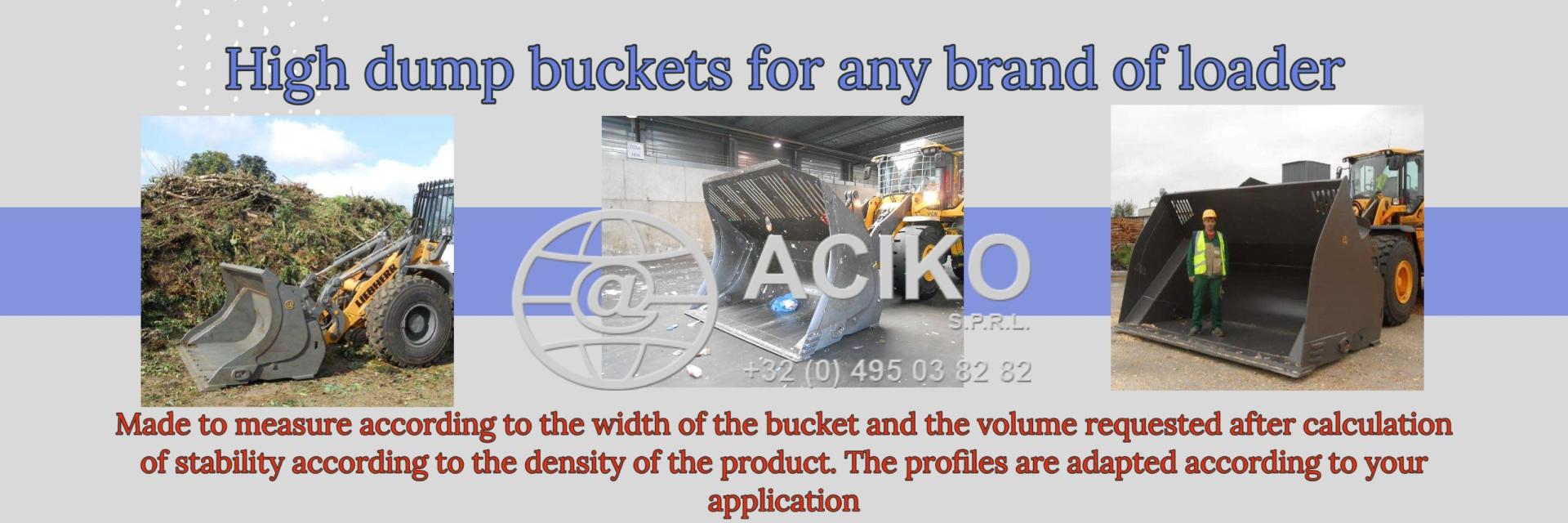R.E.News future Technology-Alpine Traditions Fuelling a Revolution in Wood-Based Construction Materials
 16/04/25-FR-English-NL-footer
16/04/25-FR-English-NL-footer
Les traditions alpines révolutionnent les matériaux de construction à base de bois
 Image- Empa ETH Zurich
Image- Empa ETH Zurich
Au cœur des vallées alpines, niché entre des pentes abruptes et des traditions séculaires, un artisanat modeste continue de prospérer : le fendage manuel de bardeaux de bois. Connus pour leur charme rustique et leur résistance, ces bardeaux ornent toits et façades depuis des générations. Mais aujourd'hui, cette technique ancestrale est au cœur d'une avancée révolutionnaire qui va révolutionner la construction durable.
Inspirés par cette méthode traditionnelle, des chercheurs de l'Empa et de l'ETH Zurich ont développé une nouvelle approche pour créer des matériaux à base de bois performants et économes en ressources. Comme le souligne le professeur Ingo Burgert, responsable de l'initiative à l'Empa : « Compte tenu de l'impact croissant du changement climatique sur nos forêts et le secteur de la construction, la production de panneaux à partir de bardeaux fendus s'impose comme une évidence.»
Ce changement tombe à pic. Face au changement climatique qui frappe durement les forêts d'Europe centrale, notamment l'épicéa, et à la demande croissante de construction durable, une utilisation plus intelligente et plus flexible du bois n'est plus seulement une bonne idée, c'est une nécessité.
Le cas des feuillus
L'épicéa, longtemps pilier de l'industrie du bois d'Europe centrale, peine aujourd'hui à survivre aux longues périodes de sécheresse. Avec l'évolution des forêts, les essences de feuillus, plus résistantes à la sécheresse et plus abondantes, occupent une place de choix. Pourtant, l'ironie est difficile à ignorer : une grande partie de ce précieux bois est encore brûlée pour produire de l'énergie plutôt que d'être utilisée dans des structures durables.
C'est là que Burgert et son équipe ont vu une opportunité en or. Contrairement à la transformation conventionnelle du bois, qui gaspille souvent environ 40 % du bois, leur méthode de fendage des grumes en bâtons, plutôt que de sciage, augmente considérablement le rendement et réduit les déchets. « Le bois peut être fendu parallèlement aux fibres avec un minimum d'énergie et quasiment aucune perte », explique Burgert. « La production de bardeaux nous montre comment transformer le bois de manière économe en énergie et en matériaux. »
En adaptant ce procédé ancestral aux bois feuillus modernes, l'équipe a ouvert une voie prometteuse pour la fabrication de panneaux structurels à partir de matériaux qui, autrement, partiraient en fumée – littéralement.
Pour y parvenir, les chercheurs ont mis au point un procédé de fendage en deux étapes, transformant ce qui était autrefois du bois de chauffage en matériau de construction haute performance. Tout d'abord, des plaques plates sont clivées des bûches, puis celles-ci sont à nouveau fendues en bâtonnets de dimensions précises. S'inspirant des fendeuses à bois de chauffage traditionnelles, l'équipe a créé un appareil à l'échelle du laboratoire doté d'une tête multi-lames capable de trancher plusieurs pièces d'un seul coup.
Le résultat ? Une nouvelle classe de composants en bois qui conservent l'intégrité de leurs fibres, un facteur clé pour offrir une résistance mécanique comparable à celle du bois massif, sans pour autant engendrer les déchets et la consommation d'énergie typiques des scieries industrielles.
Un hic cependant : les formes irrégulières produites par le fendage naturel compliquaient le contrôle qualité. C'est là que commence le prochain chapitre.
On peut dire que cette innovation allie l'ancien à l'ultra-moderne. Grâce à l'intelligence artificielle, l'équipe s'est attaquée de front au problème des irrégularités. Des images haute résolution de chaque pièce sont capturées et analysées par un réseau neuronal entraîné à identifier des propriétés clés comme la rigidité, indépendamment de la forme, de la taille ou de l'essence.
« Si nous utilisons à l'avenir différents types de bois de différentes qualités, le tri du bois jouera un rôle crucial », explique Mark Schubert, chercheur à l'Empa et spécialiste en IA au sein de l'équipe. « Grâce à nos algorithmes d'apprentissage automatique, nous générons un maximum de données sur chaque pièce de bois afin de l'utiliser de manière optimale pour des matériaux à base de bois aux propriétés définies.»
Même sans tri préalable, les premiers panneaux de démonstration ont affiché des performances impressionnantes, signe évident d'un potentiel inexploité. Grâce à une classification et un perfectionnement appropriés, ces panneaux sont appelés à devenir de sérieux candidats pour les applications porteuses dans les bâtiments de demain.
Du laboratoire à la réalité
Bien entendu, les résultats prometteurs obtenus en laboratoire ne sont qu'un début. Transformer cette méthode innovante en solution évolutive implique de surmonter plusieurs obstacles : assembler des bâtons irréguliers en panneaux solides, affiner les techniques de production et garantir des performances prévisibles avec différents intrants.
Malgré le travail qui reste à accomplir, Burgert reste confiant. « Notre procédé a le potentiel d'offrir une alternative durable à l'utilisation du bois dans un contexte de changement climatique accéléré », affirme-t-il.
Et d'autres projets sont en préparation. S'inscrivant dans le cadre de l'initiative plus vaste « Mainstreaming Wood Construction » (MainWood), le projet vise à positionner le bois comme matériau de construction de premier plan dans les secteurs public et privé. Il ne s'agit pas seulement de matériaux, mais de repenser notre façon de construire.
Pour ancrer cette révolution, un projet de Centre dédié aux matériaux et structures en bois est en cours. Soutenu par le Conseil des EPF et impliquant des acteurs clés du monde universitaire et de l'industrie, ce centre consolidera la recherche suisse de pointe sur le bois et amplifiera son impact.
Pôle de collaboration, le centre aura pour missions :
de lancer des projets de pointe avec des partenaires industriels ;
de développer des matériaux innovants à base de bois ;
d'étendre la chaîne de valeur, du bois brut aux éléments de construction de haute technologie.
En favorisant cet écosystème, le centre vise à rendre le bois, avec ses propriétés renouvelables et de séquestration du carbone, plus compétitif et accessible que jamais.
Réinventer le bois pour un avenir bas carbone
Cette approche ambitieuse ne se limite pas à remplacer les matériaux traditionnels. Il s'agit de repenser la valorisation des ressources, en alliant intelligence numérique et résilience naturelle. Elle s'appuie sur une pratique séculaire qui a toujours gardé le secret de la construction durable.
Des bardeaux alpins fendus à la main aux panneaux structurels optimisés par l'IA, le parcours du bois est en pleine redéfinition. Si tout se déroule comme prévu, le bois ne sera plus seulement un matériau obsolète, il représentera l'avenir de la construction éco-responsable.
NJC.© Info Empa ETH Zurich
-------------------------------------------------------------------------------------------------------------------
 16/04/25-English
16/04/25-English
Alpine Traditions Fuelling a Revolution in Wood-Based Construction Materials
 Image- Empa ETH Zurich
Image- Empa ETH Zurich
Deep in the Alpine valleys, nestled among steep slopes and centuries-old traditions, a humble craft continues to thrive: the hand-splitting of wooden shingles. Known for their rustic charm and resilience, these shingles have adorned rooftops and facades for generations. But now, this age-old technique is at the heart of a pioneering breakthrough set to reshape sustainable construction.
Inspired by this traditional method, researchers at Switzerland’s Empa and ETH Zurich have developed a new approach to create resource-efficient, high-performance wood-based materials. As Professor Ingo Burgert, leading the initiative at Empa, puts it: “In view of the growing impact of climate change on our forests and the construction sector, the production of panels from split sticks is an obvious choice.”
This shift couldn’t come at a better time. With climate change battering Central European forests, particularly spruce, and a growing demand for sustainable construction, a smarter, more flexible use of wood is no longer just a good idea — it’s a necessity.
The case for hardwoods
Spruce, long the mainstay of Central Europe’s timber industry, is now struggling to survive extended periods of drought. As forests evolve, hardwood species — more drought-resistant and plentiful — are stepping into the spotlight. Yet, the irony is hard to ignore: much of this valuable hardwood is still burnt for energy rather than used in long-lasting structures.
That’s where Burgert and his team saw a golden opportunity. Unlike conventional timber processing that often wastes around 40% of the wood, their method of splitting logs into sticks — rather than sawing — significantly boosts yield and reduces waste. “Wood can be split parallel to the fibres with minimal energy and almost no losses,” Burgert explains. “Shingle production shows us how wood can be processed in an energy-efficient and material-efficient way.”
By adapting this age-old process for modern hardwoods, the team has created a compelling path forward for making structural panels out of materials that would otherwise go up in smoke — quite literally.
To achieve this, the researchers engineered a two-stage splitting process, turning what once was firewood into high-performance construction material. First, flat slabs are cleaved off from logs. Then, these are further split into sticks of precise dimensions. Borrowing from traditional firewood splitters, the team created a lab-scale device featuring a multi-bladed head capable of slicing multiple pieces in a single strike.
The outcome? A new class of wooden components that retain the integrity of their fibres — a key factor in delivering mechanical strength on par with solid wood, yet without the waste and energy consumption typical of industrial sawmills.
Still, there was a hitch: the irregular shapes produced by natural splitting made consistent quality control a challenge. That’s where the next chapter begins.
You could say this innovation marries the old with the ultra-new. Using artificial intelligence, the team tackled the irregularity problem head-on. High-resolution images of every stick are captured and analysed by a neural network trained to identify key properties like stiffness, regardless of shape, size, or species.
“If we use different types of wood of different qualities in the future, wood sorting will play a crucial role,” notes Mark Schubert, an Empa researcher and AI specialist on the team. “With our machine learning algorithms, we therefore generate as much data as possible about each individual piece of wood in order to use it optimally for wood-based materials with defined properties.”
Even without prior sorting, the early demonstrator panels performed impressively — a clear sign of untapped potential. With proper classification and refinement, the panels are set to become serious contenders for load-bearing applications in tomorrow’s buildings.
From lab to life
Of course, promising lab results are just the beginning. Turning this innovative method into a scalable solution means addressing several hurdles: bonding irregular sticks into solid panels, refining production techniques, and ensuring predictable performance across varied inputs.
Despite the work ahead, Burgert remains confident. “Our process has the potential to offer a sustainable alternative for the use of wood in times of accelerating climate change,” he says.
And there’s more in the pipeline. As part of the broader “Mainstreaming Wood Construction” (MainWood) initiative, the project aims to position wood as a primary construction material in both public and private sectors. This isn’t just about materials — it’s about reshaping the way we build.
o anchor this revolution, plans are in motion for a dedicated Centre for Wood Materials and Structures. Backed by the ETH Board and involving key players from academia and industry, the centre will consolidate Switzerland’s leading wood research and amplify its impact.
Serving as a hub for collaboration, the centre will:
Initiate cutting-edge projects with industry partners
Develop innovative wood-based materials
Extend the value chain from raw timber to high-tech construction elements
By fostering this ecosystem, the centre aims to make wood — with its renewable and carbon-sequestering properties — more competitive and accessible than ever before.
Reinventing wood for a low-carbon future
This ambitious approach isn’t merely about replacing traditional materials. It’s about rethinking how we value resources, combining digital intelligence with natural resilience. And it’s grounded in a centuries-old practice that quietly held the secret to sustainable construction all along.
From hand-split Alpine shingles to AI-enhanced structural panels, the journey of timber is being redefined. If all goes to plan, wood won’t just be a legacy material — it’ll be the future of climate-smart construction.
NJC.© Info Empa ETH Zurich
----------------------------------------------------------------------------------------------------------
 16/04/25-NL
16/04/25-NL
Alpentradities voeden een revolutie in houtgebaseerde bouwmaterialen
 Image- Empa ETH Zurich
Image- Empa ETH Zurich
Diep in de Alpenvalleien, genesteld tussen steile hellingen en eeuwenoude tradities, blijft een bescheiden ambacht bloeien: het handmatig splijten van houten shingles. Bekend om hun rustieke charme en veerkracht, sieren deze shingles al generaties lang daken en gevels. Maar nu vormt deze eeuwenoude techniek de kern van een baanbrekende doorbraak die de duurzame bouw een nieuwe vorm zal geven.
Geïnspireerd door deze traditionele methode hebben onderzoekers van het Zwitserse Empa en ETH Zürich een nieuwe aanpak ontwikkeld om grondstofefficiënte, hoogwaardige houtgebaseerde materialen te creëren. Zoals professor Ingo Burgert, die het initiatief bij Empa leidt, het verwoordt: "Gezien de groeiende impact van klimaatverandering op onze bossen en de bouwsector, is de productie van panelen uit gespleten hout een logische keuze."
Deze verandering had niet op een beter moment kunnen komen. Nu de klimaatverandering de bossen van Centraal-Europa, met name sparren, teistert en er een groeiende vraag is naar duurzame bouw, is een slimmer en flexibeler gebruik van hout niet langer alleen een goed idee – het is een noodzaak.
Het pleidooi voor hardhout
Sparrenhout, lange tijd de steunpilaar van de houtindustrie in Centraal-Europa, worstelt nu met het overleven van langdurige droogteperiodes. Naarmate bossen zich ontwikkelen, komen hardhoutsoorten – beter bestand tegen droogte en overvloedig aanwezig – in de schijnwerpers te staan. De ironie is echter moeilijk te negeren: veel van dit waardevolle hardhout wordt nog steeds verbrand voor energie in plaats van gebruikt in duurzame constructies.
Daar zagen Burgert en zijn team een gouden kans. In tegenstelling tot conventionele houtverwerking, waarbij vaak zo'n 40% van het hout verloren gaat, verhoogt hun methode om boomstammen in stokken te splijten – in plaats van te zagen – de opbrengst aanzienlijk en vermindert ze afval. "Hout kan parallel aan de vezels worden gespleten met minimale energie en vrijwel geen verlies", legt Burgert uit. "De productie van shingles laat ons zien hoe hout op een energie- en materiaalefficiënte manier kan worden verwerkt."
Door dit eeuwenoude proces aan te passen voor modern hardhout, heeft het team een aantrekkelijke weg vrijgemaakt voor de productie van constructiepanelen van materialen die anders letterlijk in rook zouden opgaan.
Om dit te bereiken, ontwikkelden de onderzoekers een tweestaps splijtproces, waarmee wat ooit brandhout was, werd omgezet in hoogwaardig bouwmateriaal. Eerst worden platte platen van de boomstammen gekloofd. Vervolgens worden deze verder gespleten in stukken met precieze afmetingen. Gebaseerd op traditionele brandhoutklovers, creëerde het team een apparaat op laboratoriumschaal met een kop met meerdere bladen die meerdere stukken in één keer kan snijden.
Het resultaat? Een nieuwe klasse houten componenten die de integriteit van hun vezels behouden – een belangrijke factor voor een mechanische sterkte die vergelijkbaar is met die van massief hout, maar dan zonder het afval en energieverbruik dat kenmerkend is voor industriële zagerijen.
Toch was er een addertje onder het gras: de onregelmatige vormen die door natuurlijk splijten ontstaan, maakten een consistente kwaliteitscontrole een uitdaging. Daar begint het volgende hoofdstuk.
Je zou kunnen zeggen dat deze innovatie het oude met het ultranieuwe combineert. Met behulp van kunstmatige intelligentie pakte het team het probleem van onregelmatigheden direct aan. Hoge-resolutiebeelden van elke stok worden vastgelegd en geanalyseerd door een neuraal netwerk dat getraind is om belangrijke eigenschappen zoals stijfheid te identificeren, ongeacht vorm, grootte of soort.
"Als we in de toekomst verschillende houtsoorten van verschillende kwaliteiten gebruiken, zal houtsortering een cruciale rol spelen", aldus Mark Schubert, onderzoeker bij Empa en AI-specialist binnen het team. "Met onze machine learning-algoritmen genereren we daarom zoveel mogelijk data over elk afzonderlijk stuk hout om deze optimaal te gebruiken voor houtachtige materialen met gedefinieerde eigenschappen."
Zelfs zonder voorafgaande sortering presteerden de eerste demonstratiepanelen indrukwekkend – een duidelijk teken van onbenut potentieel. Met de juiste classificatie en verfijning zullen de panelen serieuze kandidaten worden voor dragende toepassingen in de gebouwen van morgen.
Van lab naar leven
Natuurlijk zijn veelbelovende labresultaten nog maar het begin. Om deze innovatieve methode om te zetten in een schaalbare oplossing, moeten verschillende obstakels worden overwonnen: het verbinden van onregelmatige houtblokken tot massieve panelen, het verfijnen van productietechnieken en het garanderen van voorspelbare prestaties bij verschillende inputs.
Ondanks de inspanningen die nog moeten worden geleverd, blijft Burgert vol vertrouwen. "Ons proces heeft de potentie om een duurzaam alternatief te bieden voor het gebruik van hout in tijden van versnelde klimaatverandering", zegt hij.
En er zit nog meer in de pijplijn. Als onderdeel van het bredere initiatief "Mainstreaming Wood Construction" (MainWood) wil het project hout positioneren als primair bouwmateriaal in zowel de publieke als de private sector. Het gaat niet alleen om materialen – het gaat om het hervormen van de manier waarop we bouwen.
Om deze revolutie te verankeren, zijn er plannen voor een speciaal Centrum voor Houtmaterialen en -constructies. Gesteund door de raad van bestuur van de ETH en met medewerking van belangrijke spelers uit de academische wereld en de industrie, zal het centrum het toonaangevende houtonderzoek van Zwitserland consolideren en de impact ervan vergroten.
Het centrum fungeert als een knooppunt voor samenwerking en zal:
Geavanceerde projecten initiëren met industriële partners
Innovatieve houtmaterialen ontwikkelen
De waardeketen uitbreiden van ruw hout tot hightech bouwelementen
Door dit ecosysteem te bevorderen, wil het centrum hout – met zijn hernieuwbare en koolstofvasthoudende eigenschappen – concurrerender en toegankelijker maken dan ooit tevoren.
Hout heruitvinden voor een koolstofarme toekomst
Deze ambitieuze aanpak gaat niet alleen over het vervangen van traditionele materialen. Het gaat over het heroverwegen van hoe we grondstoffen waarderen, door digitale intelligentie te combineren met natuurlijke veerkracht. En het is gebaseerd op een eeuwenoude praktijk die al die tijd stilletjes het geheim van duurzaam bouwen bewaarde.
Van handgespleten Alpenshingles tot AI-verbeterde constructiepanelen: de reis van hout wordt opnieuw gedefinieerd. Als alles volgens plan verloopt, zal hout niet alleen een verouderd materiaal zijn, maar ook de toekomst van klimaatslimme bouw.
NJC.© Info Empa ETH Zurich
--------------------------------------------------------------------------------------------------------------
Date de dernière mise à jour : 15/04/2025

















